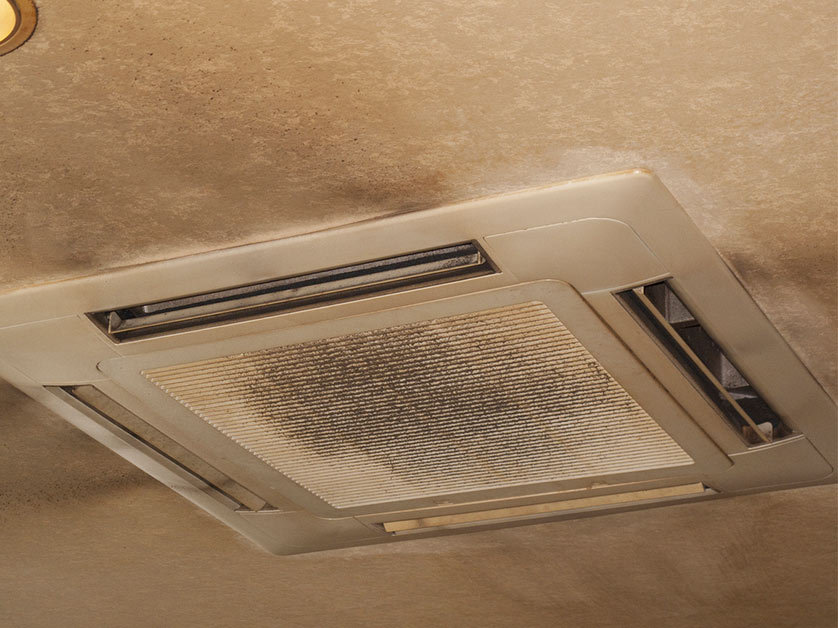Mold growth within HVAC systems is a critical concern for commercial buildings, notably in areas like Irvine, CA, where varying climate conditions can foster environments conducive to mold proliferation. If left unchecked, mold can significantly impact indoor air quality (IAQ) and, by extension, the health and comfort of occupants within commercial spaces. In response to this persistent issue, let’s delve into actionable strategies that can be employed to combat mold within commercial HVAC systems effectively.

Understanding the Risks of Mold in HVAC Systems
Mold thrives in environments that offer warmth, moisture, and organic material for sustenance. In commercial properties, HVAC systems become prime real estate for mold colonization, especially during humid conditions prevalent in regions like Irvine. Aside from the obvious health hazards posed by molds such as Aspergillus niger, which can trigger respiratory problems and allergy-like symptoms, there’s also the “stinky sock” syndrome – an unpleasant odor indicative of mold issues. Recognizing these risks is pivotal in prompting timely action to mitigate mold growth in commercial HVAC systems.
Proactive Mold Monitoring and Maintenance
Routine inspection and maintenance of HVAC systems are cornerstone practices in preventing mold infestation. Given the climate in Irvine, which can fluctuate between dry and humid seasons, it becomes even more essential to monitor HVAC systems for signs of mold growth actively. The U.S. Environmental Protection Agency (EPA) underscores the importance of regular HVAC checks to maintain optimal air quality and prevent moisture accumulation that could lead to mold growth.
Mold Remediation Techniques for HVAC Systems
When mold is detected within an HVAC system, taking swift and effective action is crucial. The process begins with deactivating the system to prevent the spread of mold spores. The adoption of stringent safety measures, such as the use of N-95 respirators during mold cleanup efforts, is also critical. Following safety protocols, the replacement of damp, porous materials, and the cleaning of non-porous surfaces with EPA-registered HVAC disinfectants help eradicate existing mold colonies. Additionally, focusing on the cleanliness of HVAC coils, condensate pans, and drain lines is essential in removing the conditions favorable for mold growth.
It’s worth noting that advanced techniques, such as employing a mechanical coil cleaning system, can significantly enhance the removal of solid debris and dust buildup. Dust serves as a primary food source for mold; hence, keeping HVAC coils clean is fundamental in preventing mold proliferation.
Mold Prevention Strategies
Beyond immediate remediation efforts, the implementation of long-term mold prevention strategies is imperative. Utilizing EPA-registered mold and mildew inhibitors on HVAC components can offer prolonged protection against mold growth, ensuring a healthy indoor environment for up to two years following application. Furthermore, thorough cleanup with high-efficiency particulate air (HEPA) vacuums post-remediation ensures that any lingering mold spores are removed, minimizing the risk of recurrent mold issues.
Seeking Professional Assistance
While the steps outlined provide a comprehensive approach to combating mold in commercial HVAC systems, the intricacies involved in mold remediation often necessitate professional expertise, especially in complex commercial settings. For businesses in Irvine, CA, and surrounding areas, seeking assistance from experienced HVAC professionals adept in mold issues is a prudent measure to ensure thorough remediation and prevention. Kemnitz Air Conditioning & Heating Inc. provides expert HVAC mold remediation services to help protect your commercial space. Call us today at (949) 453-8500 or fill out our online form to schedule a consultation.
Category: hvac Tags: commercial hvac, HVAC, hvac systems


